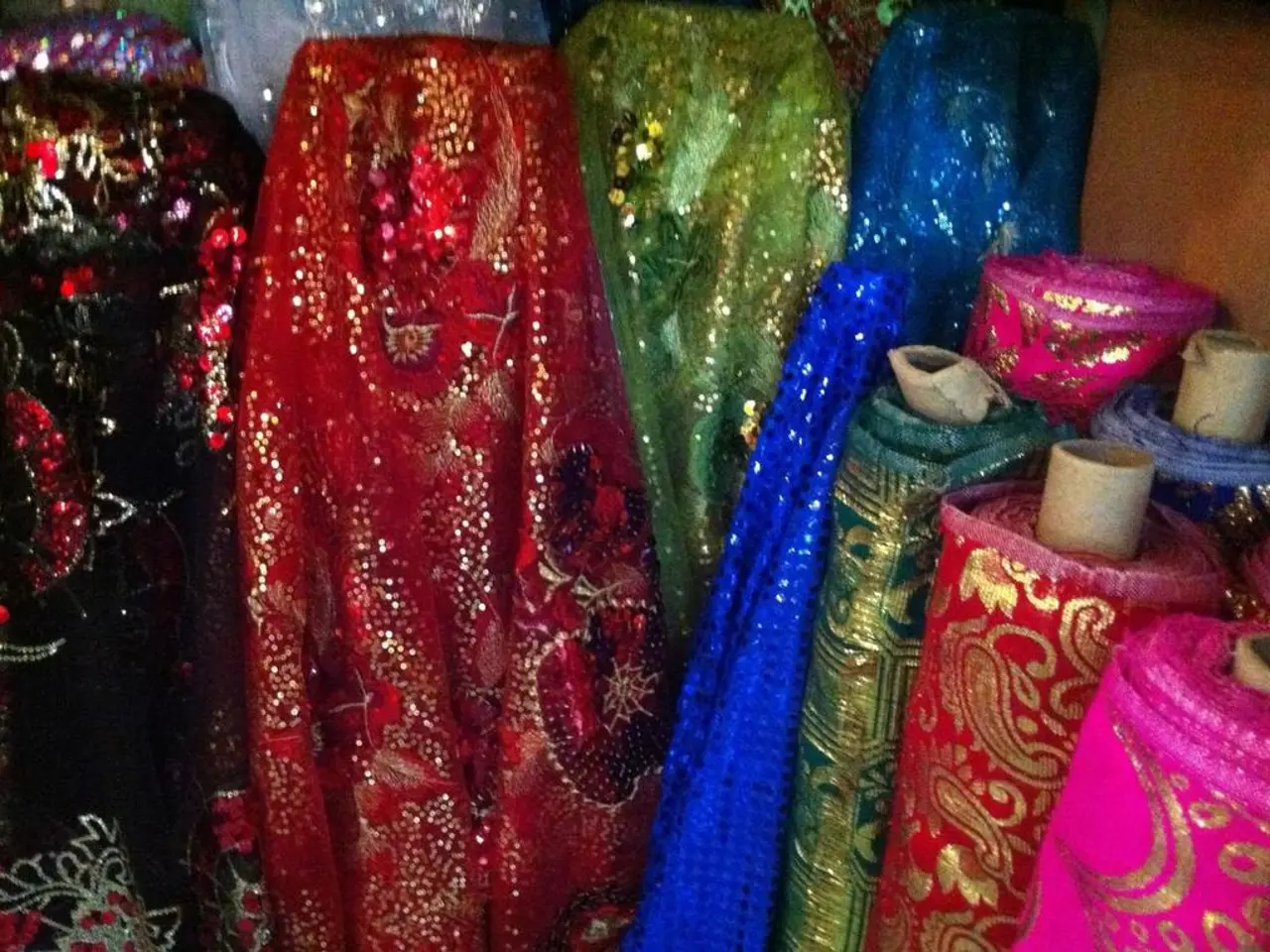Composting old clothing: A radical idea for waste reduction.
In the fashion industry, only about 15% of clothing gets recycled, according to the US Environmental Protection Agency. To make compostable clothing more widespread, effective collection schemes combined with supportive government regulations are crucial. This approach aligns environmental goals with practical infrastructure and market dynamics to scale compostable apparel effectively.
Key strategies include designing garments for easy composting and circularity, implementing convenient collection programs, government regulations and incentives, investing in innovative materials and recycling technologies, raising consumer awareness and demand, and collaborations across stakeholders.
More designers are creating compostable garments, such as Katie Lopes, founder of Stripe & Stare, a lingerie brand that makes compostable underwear, and Katherine Quigley, founder of Sustain, a clothing company that uses natural dyes and sews with cotton thread. Fast fashion retailers like H&M and Zara have also set up collecting schemes where customers can drop off old clothes to be recycled.
However, challenges remain. Most composting facilities do not accept textile waste, making it challenging to compost clothing. Foulkes-Arellano, who has been studying textile disposal systems in Europe, stated that unless a brand guarantees to collect all its own garments, it's wishful thinking. The stitches in bio-degradable garments are rarely made with cotton sewing thread, and natural fibres, like cotton, linen, silk, or wool, are bio-degradable but are often soaked in dyes and other agents that are not as environmentally friendly in the manufacturing process.
From 2000 to 2014, the number of clothing items produced each year doubled. This rapid production rate contributes significantly to the environmental impact of the fashion industry. To address this issue, Quigley advocates for companies to be responsible for the full life cycle of their clothing, suggesting that turning people back to having less, but more durable and better quality clothes, could be a solution.
Moreover, governments can introduce regulations that mandate or incentivize brands to use compostable materials and require take-back or collection systems for end-of-life apparel. Subsidies, tax breaks, or funding for circular fashion infrastructure, including composting facilities, can accelerate adoption. Government and private investment in R&D and commercialization of bio-based fibers like PLA fibers, mycelium-based leathers, and fibers derived from hemp or banana will make compostable clothing more functional and appealing.
In conclusion, widespread adoption of compostable clothing requires a collaborative effort from designers, retailers, governments, and consumers. By embracing these strategies, we can move towards a more sustainable fashion industry that prioritizes the environment, promotes circularity, and reduces textile waste.
Designers are increasingly creating compostable garments, such as Katie Lopes' Stripe & Stare and Katherine Quigley's Sustain, but challenges remain in composting clothing due to most facilities not accepting textile waste. To encourage the use of compostable materials and implement effective collection systems, governments can introduce regulations or incentives. Investments in innovative materials and recycling technologies, like bio-based fibers, can make compostable clothing more functional and appealing. Collaboration across stakeholders, including retailers and consumers, is crucial to moving towards a more sustainable and environmentally-friendly fashion industry. Governments, designers, retailers, and consumers must work together to promote circularity, reduce textile waste, and prioritize the environment.




